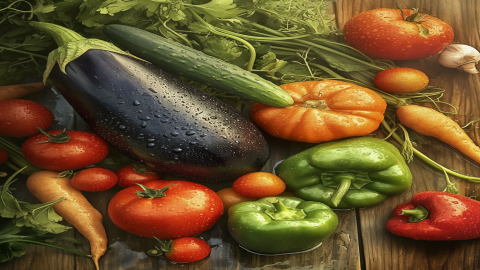蔬菜搭配食谱有哪些
Vegetable pairing recipes commonly include combinations such as leafy greens + mushrooms, cruciferous vegetables + root vegetables, gourd and nightshade vegetables + legumes, leafy vegetables + seaweed, and light-colored vegetables + dark-colored vegetables.

1. Leafy Greens + Mushrooms: For example, spinach paired with shiitake mushrooms. Leafy greens are rich in vitamin K and folic acid, while mushrooms contain polysaccharides and B-complex vitamins. This combination can enhance immunity and is high in dietary fiber, promoting intestinal motility—ideal for individuals with weak digestive function.
2. Cruciferous Vegetables + Root Vegetables: For example, broccoli paired with carrots. Cruciferous vegetables contain glucosinolates (which convert into beneficial compounds when cooked), while root vegetables are rich in beta-carotene. Consuming them together provides a variety of vitamins and offers complementary textures, making this combination suitable for daily meals.
3. Gourd and Nightshade Vegetables + Legumes: For example, tomatoes paired with snow peas. Gourd and nightshade vegetables are rich in lycopene and vitamin C, while legumes provide high-quality plant protein and calcium. This combination balances vitamin and protein intake, ideal for individuals managing fat intake.
4. Leafy Vegetables + Seaweed: For example, yuemaicai (garden lettuce) paired with kelp. Leafy vegetables contain vitamin B2 and iron, while seaweed is rich in iodine and potassium alginate. This pairing helps prevent iodine deficiency and has a high total dietary fiber content, aiding in lipid regulation—suitable for middle-aged and elderly populations.
5. Light-Colored Vegetables + Dark-Colored Vegetables: For example, napa cabbage paired with red cabbage. Light-colored vegetables are mildly sweet and easy to digest, while dark-colored ones are rich in anthocyanins and flavonoids. Combining them diversifies nutrient intake and avoids the limitations of relying on a single vegetable type—appropriate for all age groups.
In daily care, attention should be paid to cooking methods: prefer steaming, boiling, or quick stir-frying over frying. Aim to consume 300–500 grams of vegetables per day, with more than half being dark-colored varieties. Additionally, pair vegetables with staple grains and protein sources to achieve a balanced diet.





